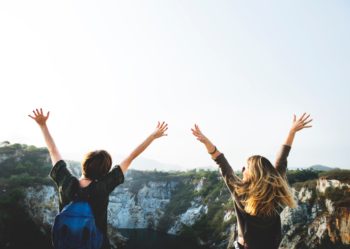Writing in the AI Era
 Writing in the AI Era
Writing in the AI Era
As a school principal at a small school, I wear a lot of hats. Educators in general do much more than just ensure kids are learning. Schools take on the role of instruction, enrichment, parent support, wrap around services, field trips, college readiness, emotional growth, nutrition, and much more! While I love doing this work, there are some tasks that are very time consuming and they take me into my office and away from working directly with my students and families. In recent years, I have used Artificial Intelligence (AI) to help me with some of these tasks. AI can write letters, emails, and memos for me; it can create schedules and lesson plans, and professional development slides. And it’s the same in the classroom. Most assignments given to students can be done very quickly by using generative AI tools. So why do kids really need to learn to do things on their own?
When Students Ask Us Why They Must Learn Specific Topics
This question has been asked about school courses for years. Kids will ask, “Why do I need to learn this?” or “When will I use this in my real life?” While this may be a fair question for some topics, many things kids learn in school may not be about that specific topic of the day. We don’t need to memorize the specific dates that the Aztecs inhabited Mexico, or the year the Magna Carta was written. We study history so we can better understand our world and so we can learn from the past. We learn math to help our brains develop critical and abstract thinking skills. We learn science so we can understand how to theorize and test, and so we can better understand how the world works. And we learn to write so we can effectively communicate our ideas to others.
Setting Boundaries for Students Using AI
AI may be a great tool, but it isn’t perfect. When we ask AI to do things we already know how to do in order to save some time, that’s great! That’s like me asking AI to write a letter to parents about the after-school pick-up procedures. Could I do that myself? Absolutely. Does it save me time to have AI do it in a fraction of the time it would take me? Without a doubt. Additionally, when AI does produce my work for me, I have the skillset to review what was written so I can ensure it is up to par with my expectations.
When your child wants to take the easy way out, talk to them about the skills they are supposed to be learning and the power of having our brains master clear communication and complex thought. Teachers assign essays so students can learn to organize thoughts and convey ideas in a way that is engaging to the audience. Without these skills, it is possible that they will be too dependent on AI. They will also be lacking in clear communication skills that will help them succeed in all aspects of their lives.
Remind Students They Must Learn How to Write
So when your child comes home and doesn’t want to practice their letters or write that essay, remind them that writing is still a necessary skill, even in the era of AI!
 Growth Mindset: The Power of Yet
Growth Mindset: The Power of Yet Get Support for Your Child at School
Get Support for Your Child at School Teaching Our Kids Character Habits That Last a Lifetime (Part 3)
Teaching Our Kids Character Habits That Last a Lifetime (Part 3) Teaching Our Children Executive Functioning Skills
Teaching Our Children Executive Functioning Skills